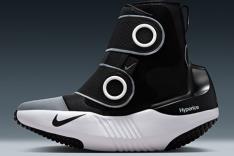So what does this mean? What it boils down to is that if the crank becomes too long, you will have to lower your saddle to make sure your crank arm doesn't yank your leg out of its socket when it reaches its lowest point. However, that's going to cause it to shoot your knee into your chest when it comes back to the top.
Even if that doesn't occur, the changing of your seat position to fix the 6-and-12 o'clock problems is going to drastically influence your 2-to-5 o'clock performance, and that's what you really care about. If you have shorter cranks, then you can have a more comfortable position. Just as importantly, shorter arms will make a complete circle faster (think of two cars going around the track, with one on the inside lane) and the pedals will reach that "sweet spot" for power generation more frequently.
In the mind of the short-is-better camp, getting more power generation cycles in a given time period is better, even if they can't generate as much power on each individual stroke.
Who's right, then? It's hard to say because no two cyclists are the same. We all come in different sizes. Not only are our legs different lengths, but the proportion of our lower and upper leg lengths vary somewhat as well. What we wind up with is what's called "an optimization problem." In other words, the answer lies somewhere in between the minimum and maximum.
More: A Breakdown of the Pedal Stroke
Finding out where that happy medium lies is no simple task, though. A good bit of research has been invested in it. It matters because not every bike is built race-ready. Depending on your specific physiology, you may find significant benefits in changing some things up on a bike's stock equipment before you take it out of the shop.
This is a consequence of the difference between human beings and how we build bikes for them. As previously mentioned, there's a lot of variation in the human leg. We force this incredibly diverse population of sizes into about 6 categories of bike sizes (48cm, 51cm, 52cm, 54cm, 56cm, and 62cm are industry standard).
Similarly, we have a pretty generic distinction of crank arm lengths, and then we all ride these bikes in different positions (time trialing is very different from normal road cycling). So just because a bike frame is built to fit you, there's no guarantee that the cranks are.
How can you know? Really, a good bike fit session is the only way to really tell.
More: 10 Bike Fit Myths...Debunked
 Search for your next triathlon.
Search for your next triathlon.
- 2
- of
- 2
About the Author









Discuss This Article